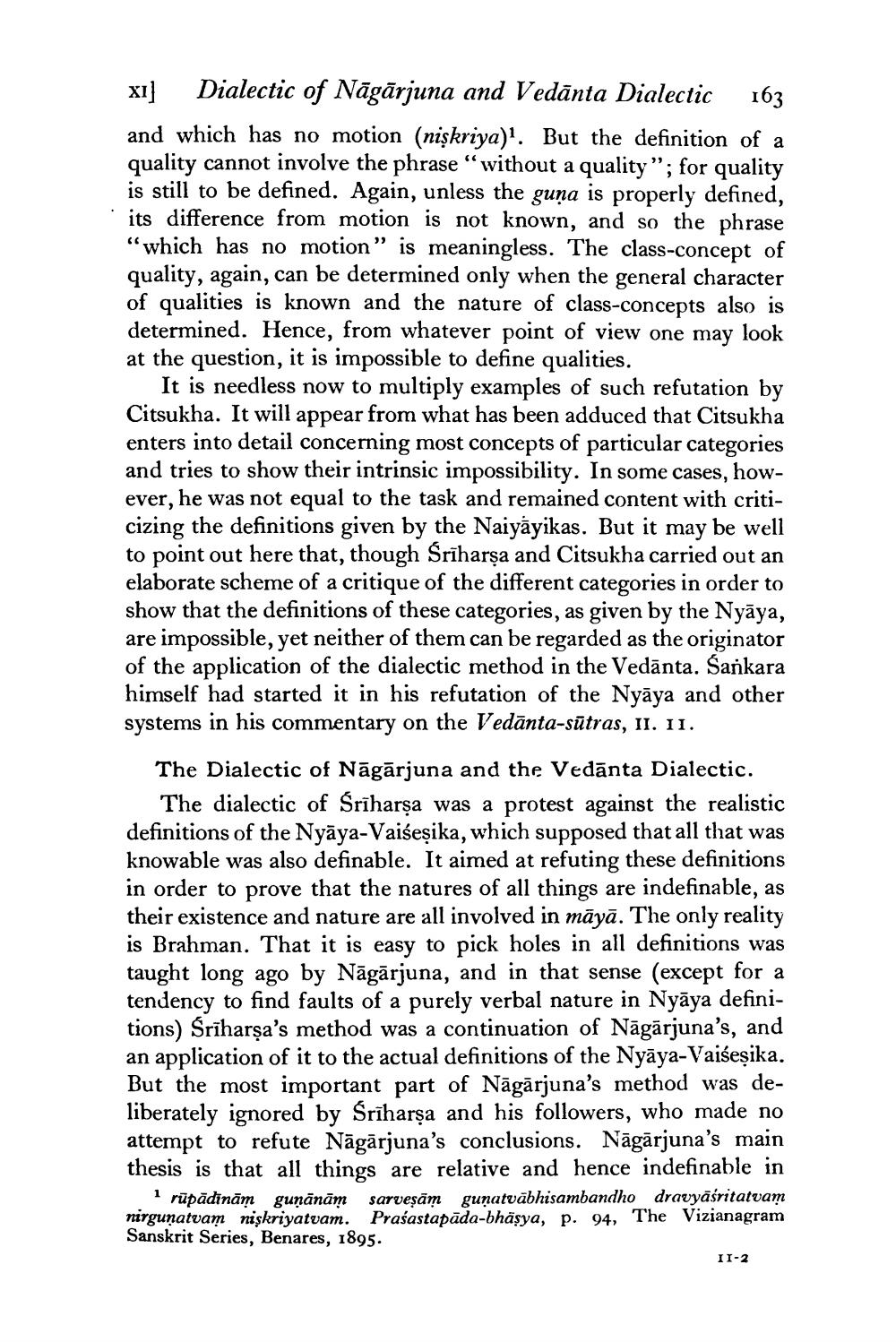________________
x] Dialectic of Nāgārjuna and Vedānta Dialectic 163 and which has no motion (niskriya)'. But the definition of a quality cannot involve the phrase "without a quality"; for quality is still to be defined. Again, unless the guna is properly defined, its difference from motion is not known, and so the phrase “which has no motion” is meaningless. The class-concept of quality, again, can be determined only when the general character of qualities is known and the nature of class-concepts also is determined. Hence, from whatever point of view one may look at the question, it is impossible to define qualities.
It is needless now to multiply examples of such refutation by Citsukha. It will appear from what has been adduced that Citsukha enters into detail concerning most concepts of particular categories and tries to show their intrinsic impossibility. In some cases, however, he was not equal to the task and remained content with criticizing the definitions given by the Naiyāyikas. But it may be well to point out here that, though Śrīharşa and Citsukha carried out an elaborate scheme of a critique of the different categories in order to show that the definitions of these categories, as given by the Nyāya, are impossible, yet neither of them can be regarded as the originator of the application of the dialectic method in the Vedānta. Sankara himself had started it in his refutation of the Nyāya and other systems in his commentary on the Vedānta-sūtras, II. II.
The Dialectic of Nāgārjuna and the Vedānta Dialectic.
The dialectic of Sriharsa was a protest against the realistic definitions of the Nyāya-Vaiseșika, which supposed that all that was knowable was also definable. It aimed at refuting these definitions in order to prove that the natures of all things are indefinable, as their existence and nature are all involved in māyā. The only reality is Brahman. That it is easy to pick holes in all definitions was taught long ago by Nāgārjuna, and in that sense (except for a tendency to find faults of a purely verbal nature in Nyāya definitions) Srīharşa's method was a continuation of Nāgārjuna's, and an application of it to the actual definitions of the Nyāya-Vaiseșika. But the most important part of Nāgārjuna's method was deliberately ignored by Śrīharşa and his followers, who made no attempt to refute Nāgārjuna's conclusions. Nāgārjuna's main thesis is that all things are relative and hence indefinable in
rūpādinām gunānām sarveşām gunatvābhisambandho dravyāśritatvam nirgunatvam niskriyatvam. Prasastapāda-bhäsya, p. 94, The Vizianagram Sanskrit Series, Benares, 1895.
II-2




